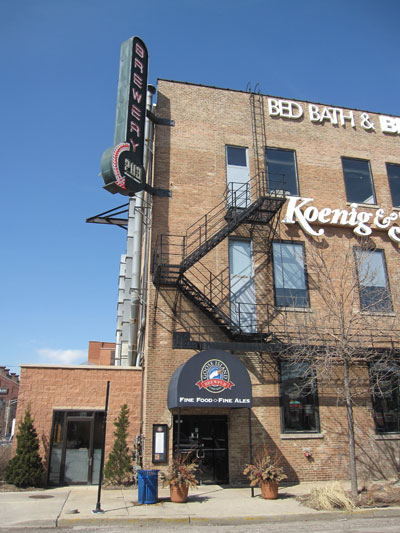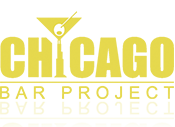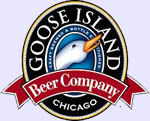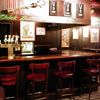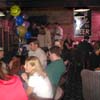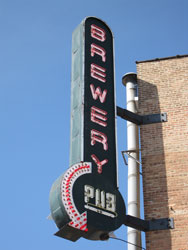 Welcome to one of the most universally loved pubs in all of Chicagoland. Those who are thirsty will appreciate the endless rotation of handcrafted brews made with superb quality. Those who are hungry will appreciate the well-designed menu that provides the ideal accompaniment to the fine selection of ale. Those who are bored will appreciate the pool tables, the Golden Tee and the general camaraderie that accompanies a room full of people getting sauced on some of the best beer they’ve ever had. As a result, few pubs in the city are more talked about, recommended, or more frequented by locals and travelers than the Goose Island Brew Pub since it opened in 1988. While their newer location in Wrigleyville is hard to beat after a Cubs game, the original location remains a true Chicago classic.
Welcome to one of the most universally loved pubs in all of Chicagoland. Those who are thirsty will appreciate the endless rotation of handcrafted brews made with superb quality. Those who are hungry will appreciate the well-designed menu that provides the ideal accompaniment to the fine selection of ale. Those who are bored will appreciate the pool tables, the Golden Tee and the general camaraderie that accompanies a room full of people getting sauced on some of the best beer they’ve ever had. As a result, few pubs in the city are more talked about, recommended, or more frequented by locals and travelers than the Goose Island Brew Pub since it opened in 1988. While their newer location in Wrigleyville is hard to beat after a Cubs game, the original location remains a true Chicago classic.
Goose Island is located just north of the landmass that it was named after, and just east of the Chicago River in a somewhat obscure part of Lincoln Park known as the “Ranch Triangle.” Tucked away at the corner of Willow and Marcey Street, the brew pub lies just a few yards “west-ish” from the intersection of Willow, Sheffield and Lincoln where the US Beer Company can be found (merely a bar despite its promising name). Goose Island opened its doors in 1988 to a beer-swilling public that was just itching for something better than the boredom of Budweiser, Miller Lite and Heineken even if the joint was originally part of an indoor shopping mall. According to Hanging Out on Halsted… and Chicago’s North Side (1991): “Constructed in 1919, the 1800 Clybourn Building has housed a manufacturer and finally The Turtle Wax Company.” Such former tenants included Muddler’s pool hall, Edith’s Bar-BQ and the Original Mitchell’s.
 Back when Goose Island originally opened, the neighborhood was a different place. This slice of Lincoln Park was gang-ridden and rough, especially considering its close proximity to the notorious Cabrini Green housing project – a “project” that was a miserable failure. Since it opened in 1941, Cabrini Green became one of the most wretched public housing in the world and synonymous with abject poverty, oppressive violence, children falling out of high-rise windows, prostitution, gang warfare, and drug trafficking even though it was located next to one of the wealthiest parts of the city. Fifteen buildings were constructed in all to house 7,000 residents, primarily consisting of African-Americans escaping the ignorance and racial struggles of the South. Since then, the urban blight known as Cabrini Green was the site where two Chicago policemen were killed by sniper fire in 1970, was the only place where I saw a McDonald’s close, was formerly host to an El stop on the Blue Line that was shut down, and was a place where cops would not get out of their cars if there was a traffic accident (they would tell you to drive to the nearest police station). In the winter of 1993, I got a job over Christmas break at Artist’s Frame Service, located a few blocks from the Goose Island Brew Pub on Clybourn, working for the entrepreneurial visionary, HR-guru and former Northern Illinois University graduate, Jay Goltz. My parents actually paid me over $200 to quit so that I did not have to drive through the grunge of the West Side or anywhere near Cabrini Green. My parents would be horrified to know that I actually played softball on a field there in 1997, just after they boarded up the most visible high rise and just before to its demolition. This particular season was highlighted by the final game in which an Australian on the team bunted with the bases loaded – he was immediately called out as you cannot bunt in softball, and the game, and our season, was abruptly over.
Back when Goose Island originally opened, the neighborhood was a different place. This slice of Lincoln Park was gang-ridden and rough, especially considering its close proximity to the notorious Cabrini Green housing project – a “project” that was a miserable failure. Since it opened in 1941, Cabrini Green became one of the most wretched public housing in the world and synonymous with abject poverty, oppressive violence, children falling out of high-rise windows, prostitution, gang warfare, and drug trafficking even though it was located next to one of the wealthiest parts of the city. Fifteen buildings were constructed in all to house 7,000 residents, primarily consisting of African-Americans escaping the ignorance and racial struggles of the South. Since then, the urban blight known as Cabrini Green was the site where two Chicago policemen were killed by sniper fire in 1970, was the only place where I saw a McDonald’s close, was formerly host to an El stop on the Blue Line that was shut down, and was a place where cops would not get out of their cars if there was a traffic accident (they would tell you to drive to the nearest police station). In the winter of 1993, I got a job over Christmas break at Artist’s Frame Service, located a few blocks from the Goose Island Brew Pub on Clybourn, working for the entrepreneurial visionary, HR-guru and former Northern Illinois University graduate, Jay Goltz. My parents actually paid me over $200 to quit so that I did not have to drive through the grunge of the West Side or anywhere near Cabrini Green. My parents would be horrified to know that I actually played softball on a field there in 1997, just after they boarded up the most visible high rise and just before to its demolition. This particular season was highlighted by the final game in which an Australian on the team bunted with the bases loaded – he was immediately called out as you cannot bunt in softball, and the game, and our season, was abruptly over.
Prior to its existence as this side of hell, Cabrini Green and greater Goose Island area was host to a series of barrack-like buildings that were built to house families whose homes had been destroyed in the Great Chicago Fire of 1871, according to Ken Schessler’s Unusual Tour of Chicago. Once these families got back on their feet and moved out, the “Barracks” filled with ruffians who spent all their time drinking and fighting and the area grew to a population of about 32,000 with 400 saloons. The worst of these dives were in a poor Italian slum section called “Little Hell,” that centered around Oak Street and Cleveland. At this particular intersection, there were 42 unsolved murders between January 1, 1910 and March 26, 1911, causing it to be called “Death Corner” or “Deadman’s Corner.”
Today, the neighborhood around the Goose Island Brew Pub is far safer, but you still have to watch yourself, particularly around the North Avenue Red Line stop where you’ll still find some ne’er-do-wells hanging out. The best way to get to Goose Island is to take a cab, but if you drive you’ll find a fair amount of metered parking. The indoor mall has since been torn down, so just look for the red-brick building with its giant “Bed, Bath and Beyond” letters in white at the top of it and large blue sign that says “Brewery” on the southwest corner. Access to the bar can be had up a few concrete stairs and under the navy blue awning emblazoned with the ubiquitous goose neck logo. At the top of the steps is a thick wooden door that yields access to the bar, but only after a ramp takes you through a small museum-like foyer that also offers full view of their copper kettles behind large panes of glass, in which Goose Island beer is brewed.
Another thick wooden door opens up into the main barroom of the Goose Island Brew Pub. Here, a large, square mahogany bar reminiscent of the one in Cheers (inspired by that found at the Bull & Finch Pub in Boston) dominates a spacious room lined with wooden booths. The hardwood floor and exposed brick walls give this room a very warm and comfortable feel. Additional restaurant-style seating and non-smoking area is available in the sunken room located a few steps below the main room, at the extreme west end of the bar. According to Shecky’s Bar, Club & Lounge Guide 2002, this part of the bar was, “once home to abandoned railway cars, wary hookers and bums.” With that in mind, this enclosed porch area with its stone tile, circular tables, wooden ice cream parlor chairs, beige walls, and plate glass windows is somewhat duller than its origins but fine to have a meal in – only if all the booths in the main barroom are taken as it is somewhat more quiet and sterile. Alternatively, there is a carpeted entertainment area with a pool table above the main bar area but in the same room, accessible via wooden steps in the southeast corner. To the right of the Golden Tee machine, more steps lead down to a library-like room with hardwood floors and shelves stocked with books. This area is closed except for private events. Yet another, rather large room can be found past the bar on your right, beyond the sizeable bathrooms. This area hosts occasional bands. Throw in the “Cellar,” a semi-private room with a big screen TV located on a lower level, and you’ve got enough space to holds up to 500 people.
 What has become one of the most popular and prevalent beers in Chicago is brewed here. A large chalkboard that hangs upon the south wall illustrates all 10 beers on tap and those planned for the rotation. You’ll find such old favorites as Honker’s Ale (their flagship ale with 4.0% alcohol content, actually brewed at their Fulton Street brewery), India Pale Ale (6.0%), Blonde Ale (4.0%), Goose Pils (4.9%), Cask Conditioned Pale Ale (5.2%), Demolition 1800 Ale (8.0%), and Hex Nut Brown Ale (4.5%). These staples can be found alongside a wide variety of continuously updated seasonal ales, such as the Colonial Pumpkin Ale, Smooth Oatmeal Stout, Honest Stout, Winter Warmer (a hearty Porter), Bourbon County Stout, Yorkshire Bitter, Maduro, Oatzen, Kolsch, New Glarus Zwickel, Robert Burns Scottish Ale, Islay Stout, Russian Stout, Old Aberration Barley Wine, Hefe Weizen, Dunkel Weizenbock, Icarus Barley Wine, Smoked Porter, Anniversary Ale, Bayou Bitter, Blue (Belgian-style), Kilgubbin Ale, XXX Porter, Willow Street Wheat, 15-Year ESB, Goose Bite, and Jubilation Ale just to name a few. About 50 different beers in total are available throughout the year and each one is served in a glass designed specifically to hold it. Expect to pay at least $4 a beer, which just goes to show that happiness doesn’t come cheap. The only non-Goose Island beer served is Bud Light in bottles.
What has become one of the most popular and prevalent beers in Chicago is brewed here. A large chalkboard that hangs upon the south wall illustrates all 10 beers on tap and those planned for the rotation. You’ll find such old favorites as Honker’s Ale (their flagship ale with 4.0% alcohol content, actually brewed at their Fulton Street brewery), India Pale Ale (6.0%), Blonde Ale (4.0%), Goose Pils (4.9%), Cask Conditioned Pale Ale (5.2%), Demolition 1800 Ale (8.0%), and Hex Nut Brown Ale (4.5%). These staples can be found alongside a wide variety of continuously updated seasonal ales, such as the Colonial Pumpkin Ale, Smooth Oatmeal Stout, Honest Stout, Winter Warmer (a hearty Porter), Bourbon County Stout, Yorkshire Bitter, Maduro, Oatzen, Kolsch, New Glarus Zwickel, Robert Burns Scottish Ale, Islay Stout, Russian Stout, Old Aberration Barley Wine, Hefe Weizen, Dunkel Weizenbock, Icarus Barley Wine, Smoked Porter, Anniversary Ale, Bayou Bitter, Blue (Belgian-style), Kilgubbin Ale, XXX Porter, Willow Street Wheat, 15-Year ESB, Goose Bite, and Jubilation Ale just to name a few. About 50 different beers in total are available throughout the year and each one is served in a glass designed specifically to hold it. Expect to pay at least $4 a beer, which just goes to show that happiness doesn’t come cheap. The only non-Goose Island beer served is Bud Light in bottles.
The best way to try these barley delights is to purchase a beer sampler that allows you to buy three or more 5-ounce glasses at $1 each. Just take note: “Back in ’97, the author got so carried away with the 5 oz. beer samplers that he accidentally hailed a police car,” (excerpt from The Official Chicago Bar Guide, 2001). If you really like a particular type of beer, you can purchase a 5-galloon keg to take home with you. For true beer enthusiasts, post-secondary education is available as part of Goose Island’s MBA program – Masters of Beer Appreciation, that is. To enroll, just ask your server and they’ll give you a passport, which states: “The owners of the Goose Island Brewpubs hereby request all whom it may concern to permit the beer lover to partake responsibly without delay or hindrance in the tasting of fresh Goose Island beers, in pursuit of his or her MBA.” All you need to do to earn your degree is to drink beer. Every time you buy a pint, your server will stamp your passport and write down the name of the beer. The pricier beers earn extra credit. After 10 and 20 credits, you will receive a complimentary 64-ounce bottle of your favorite “subject.” After 35 beers (formerly 42), you’ve earned your MBA. “All MBAs will have their name inscribed on ‘the List’ and be awarded an ‘official’ MBA shirt.” Not only that, but you’ll also be invited to exclusive beer tastings and special events. For any Chicago beer lover, your MBA is a must if you want to get ahead. Additionally, if you’re interested in viewing the brewing process that produces these Goose Island ales and lagers, tours are available for $5 every Sunday at 3:00pm. Reservations are required for large groups.
 The beer isn’t the only story at the Goose Island Brew Pub. The fare is well known for its above average quality and compliment to the beer. In fact, The Official Chicago Bar Guide (1995) points out: an “alarming percentage of the menu is made with beer.” Every meal starts out with their homemade chips – they’ve got a little kick to them, not only in terms of flavor but also from the $1 basket refill after you’ve gobbled up the first batch. The appetizer selection is highlighted by the Blonde Ale Cheese Fondue (served in a bread bowl), the Fresh Baked Pretzel (served with Düsseldorf mustard and garlic cheddar cheese spread), calamari marinated with Honker’s Ale, Blue Crab Cakes (served with tomatillo, smoked corn salsa and horseradish cream sauce), and grilled goat cheese flatbread. For the health conscious, Goose Island serves an intriguing selection of salads, as well as a few types of soup and chili. An excellent selection of sandwiches is also available, with the Brewer’s Stilton Burger being the standout due of its half-pound of black pepper-crusted ground beef, grilled and topped with roasted garlic cloves, English Stilton cheese, and more Düsseldorf mustard on a pumpernickel roll. The pulled pork is also a crowd-pleaser, as is the wild mushroom turkey burger, “Paulina Market” half-pound brat, the blackened catfish po’ boy, and the smoked turkey grinder. Entrées include the Stockyard Pepper Crusted Strip Steak, Grilled Cider Rubbed Atlantic Salmon, and Shepherd’s Pie. Daily specials include the flatiron pot roast (Sunday), Honker’s Ale BBQ meatloaf (Thursday), the self-proclaimed, “World’s Best Fish & Chips” made with Honker’s Ale-battered Lake Superior Walleye (Friday), and prime rib (Saturday). Sunday brunch features French toast, frittatas, and Bloody Marys that are topped with a large stuffed olive, a marinated pepper, a chunk of salami, and are served with a wine glass-sized chaser of the ever present Honkers Ale. Cheese cake, apple pie, chocolate fudge cake, and the “Extra Special Root Beer Float” tops it all off (before more beer, of course). In the 2002 edition of Zagat’s Chicago restaurant survey, Goose Island was rated as “good” for food, decor and service, with an average meal costing you about $19. Zagat’s went on to say, “…given their ‘great variety’ of suds and ‘better-than-bar-food’ munchies, most pronounce them ‘worth a gander.'” Goose Island probably would have fared better in Zagat’s if they had somewhat more consistent quality of food and service. While the servers are often quite helpful in describing the complex flavors of each beer along with the food best suited to be consumed with them, service can sometimes be slow and the food served cold (though this is not as bad at the Clybourn location as at the Wrigleyville location).
The beer isn’t the only story at the Goose Island Brew Pub. The fare is well known for its above average quality and compliment to the beer. In fact, The Official Chicago Bar Guide (1995) points out: an “alarming percentage of the menu is made with beer.” Every meal starts out with their homemade chips – they’ve got a little kick to them, not only in terms of flavor but also from the $1 basket refill after you’ve gobbled up the first batch. The appetizer selection is highlighted by the Blonde Ale Cheese Fondue (served in a bread bowl), the Fresh Baked Pretzel (served with Düsseldorf mustard and garlic cheddar cheese spread), calamari marinated with Honker’s Ale, Blue Crab Cakes (served with tomatillo, smoked corn salsa and horseradish cream sauce), and grilled goat cheese flatbread. For the health conscious, Goose Island serves an intriguing selection of salads, as well as a few types of soup and chili. An excellent selection of sandwiches is also available, with the Brewer’s Stilton Burger being the standout due of its half-pound of black pepper-crusted ground beef, grilled and topped with roasted garlic cloves, English Stilton cheese, and more Düsseldorf mustard on a pumpernickel roll. The pulled pork is also a crowd-pleaser, as is the wild mushroom turkey burger, “Paulina Market” half-pound brat, the blackened catfish po’ boy, and the smoked turkey grinder. Entrées include the Stockyard Pepper Crusted Strip Steak, Grilled Cider Rubbed Atlantic Salmon, and Shepherd’s Pie. Daily specials include the flatiron pot roast (Sunday), Honker’s Ale BBQ meatloaf (Thursday), the self-proclaimed, “World’s Best Fish & Chips” made with Honker’s Ale-battered Lake Superior Walleye (Friday), and prime rib (Saturday). Sunday brunch features French toast, frittatas, and Bloody Marys that are topped with a large stuffed olive, a marinated pepper, a chunk of salami, and are served with a wine glass-sized chaser of the ever present Honkers Ale. Cheese cake, apple pie, chocolate fudge cake, and the “Extra Special Root Beer Float” tops it all off (before more beer, of course). In the 2002 edition of Zagat’s Chicago restaurant survey, Goose Island was rated as “good” for food, decor and service, with an average meal costing you about $19. Zagat’s went on to say, “…given their ‘great variety’ of suds and ‘better-than-bar-food’ munchies, most pronounce them ‘worth a gander.'” Goose Island probably would have fared better in Zagat’s if they had somewhat more consistent quality of food and service. While the servers are often quite helpful in describing the complex flavors of each beer along with the food best suited to be consumed with them, service can sometimes be slow and the food served cold (though this is not as bad at the Clybourn location as at the Wrigleyville location).
As you would expect, the crowd at the Goose Island Brew Pub is heavily male. The XY-chromosomers flock to the Goose not only for the beer and food, but also to watch Cubs, Bears and college football games on a plethora of televisions especially after work and on the weekends. Women do frequent the pub, but generally as companions to their men-folk especially when dragging them to a play at the nearby Steppenwolf Theatre afterwards. Thus, if you’re single and on the prowl, you’d be better off heading up to John Barleycorn’s West, just up the street on Clybourn. If a warm, albeit noisy, atmosphere is your bag, you’ll find that Goose Island is incredibly conducive for having a great time whether you’re local or visiting. Goose Island is also popular with large gatherings of Friends of the Chicago River, Chicago Friends (meets the first Thursday of each month) and the Chicago Beer Society (also meets the first Thursday of each month).
Thankfully, Goose Island successfully renegotiated their lease in 2009 to stay open at this, their flagship location, for at least three more years. The lease was up in December and, up until November 12, this Chicago classic was in serious jeopardy of being lost forever… Click here for Chicago Tribune story.
Goose Island, as the first brewpub in Chicago, has established itself as one of the best beer bars in the city even with those who have since followed suit, such as Piece, Revolution Brewing and Haymarket. While Quencher’s, the Map Room and Hopleaf all carry a wider selection of beer, it’s tough to beat Goose Island for its brewing skill and originality. In partial recognition of its achievements over the last 15 years, the beer and bar have both received favorable reviews on Pub Crawler, Beer Advocate, Michael Jackson’s Beer Hunter, and Beer Expedition. Goose Island has been selected Best Pub in recent Citysearch annual polls, was ranked as “one of America’s 20 Best Breweries” by Food and Wine Magazine, and was called “Chicago’s Beverage of Choice” by Rolling Stone. It seems the Goose’s reputation and notoriety has extended well beyond Chicago’s borders. If you like Goose Island, be sure to check out these other brew pubs in the Chicagoland area: Rock Bottom Brewery (River North, Chicago), Roundhouse (Aurora), O’Grady’s Brewery and Pub (Arlington Heights), Mickey Finn’s (Libertyville), Flatlander’s (Lincolnshire), Gordon Biersch (Bolingbrook), and Flossmoor Station Restaurant & Brewery (Flossmoor). Otherwise, see you at the Goose. For more information, check out the Goose Island Brew Pub website. Cheers.
“Goose Island was the first brewpub in Chicago and has always been a decent place to find beer and food ever since. It heralded the renaissance of Chicago’s Clybourn Corridor, a formerly entirely industrial neighborhood that has become increasingly upscale over the years but retains some of its former character. Next door is Sam’s Liquors, easily one of the largest liquor/wine/beer stores in the world. Goose Island’s strong suit is the beer selection. There is always something to like and no shortage of styles to try. Occasionally some of them seem uninspired but you merely move on to another choice. The food is standard brewpub fare but served attractively with large portions and at fair prices. Often crowded during the dinner hours and on weekend nights, you might try Goose Island for lunch or during the afternoon. It’s good to see a brewpub that has been doing something right consistently and for a long time.”
– Bill Pierce, Highwood, IL (1/27/02) [Editor’s note: I couldn’t have said it better myself.]
